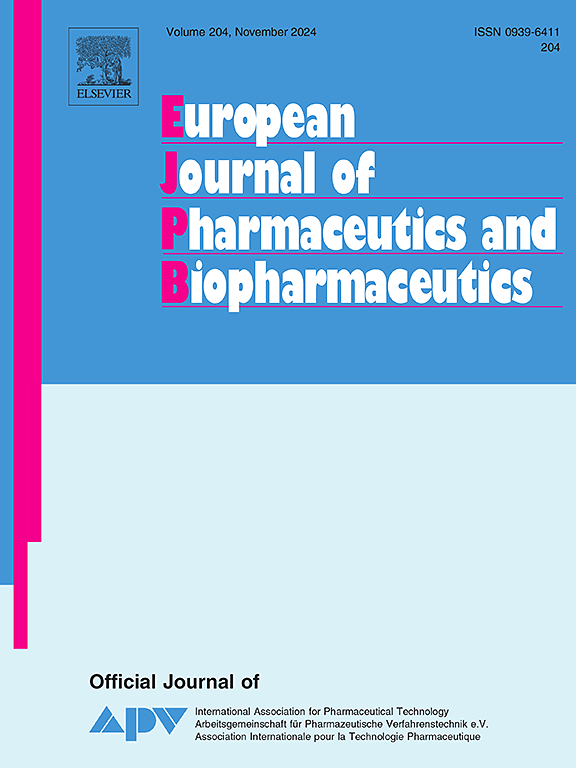Hexahistidine-metal assembly encapsulated fibroblast growth factor 21 for lipopolysaccharide-induced acute lung injury
IF 4.4
2区 医学
Q1 PHARMACOLOGY & PHARMACY
European Journal of Pharmaceutics and Biopharmaceutics
Pub Date : 2025-01-25
DOI:10.1016/j.ejpb.2025.114650
引用次数: 0
Abstract
Acute lung injury (ALI)/acute respiratory distress syndrome (ARDS) represents a spectrum of potentially fatal conditions that currently lack effective drug treatment. Recent researches suggest that Fibroblast Growth Factor 21 (FGF21) may protect against ALI/ARDS. However, the clinical use of FGF21 is limited by its rapid degradation, restricted targeting capabilities, and numerous adverse effects. Addressing this challenge, the study employs a pH-responsive nanoparticle delivery system known as Hexahistidine-metal Assembly (HmA) for administering FGF21. The entrapment efficiency (EE%) and loading capacity (LCwt%) of HmA exceed 90 % and 35 %, respectively, while the HmA@FGF21 nanoparticles exhibit an average size of 130 nm, a PDI value of approximately 0.28, and a zeta potential of 24 mV. In animal experiments, HmA@FGF21 administered in lipopolysaccharide (LPS)-induced lung injury significantly exceed those of standalone FGF21, including mitigating the pathological manifestations and reducing the wet/dry ratio, total protein concentration, and overall cell count in BALF of ALI, whether administered via the airway or intravenously. This therapeutic approach therefore shows promise for precise delivery of FGF21 to the lungs to treat ALI, and may offer a novel, and efficient method for delivery of potential pharmacological agents to address other lung diseases.

求助全文
约1分钟内获得全文
求助全文
来源期刊
CiteScore
8.80
自引率
4.10%
发文量
211
审稿时长
36 days
期刊介绍:
The European Journal of Pharmaceutics and Biopharmaceutics provides a medium for the publication of novel, innovative and hypothesis-driven research from the areas of Pharmaceutics and Biopharmaceutics.
Topics covered include for example:
Design and development of drug delivery systems for pharmaceuticals and biopharmaceuticals (small molecules, proteins, nucleic acids)
Aspects of manufacturing process design
Biomedical aspects of drug product design
Strategies and formulations for controlled drug transport across biological barriers
Physicochemical aspects of drug product development
Novel excipients for drug product design
Drug delivery and controlled release systems for systemic and local applications
Nanomaterials for therapeutic and diagnostic purposes
Advanced therapy medicinal products
Medical devices supporting a distinct pharmacological effect.

 求助内容:
求助内容: 应助结果提醒方式:
应助结果提醒方式:


